Art Stories by Fr. Nathan Zodrow, OSB, and Fr. Martin Pollard, OSB (1902 – 1997), among others.
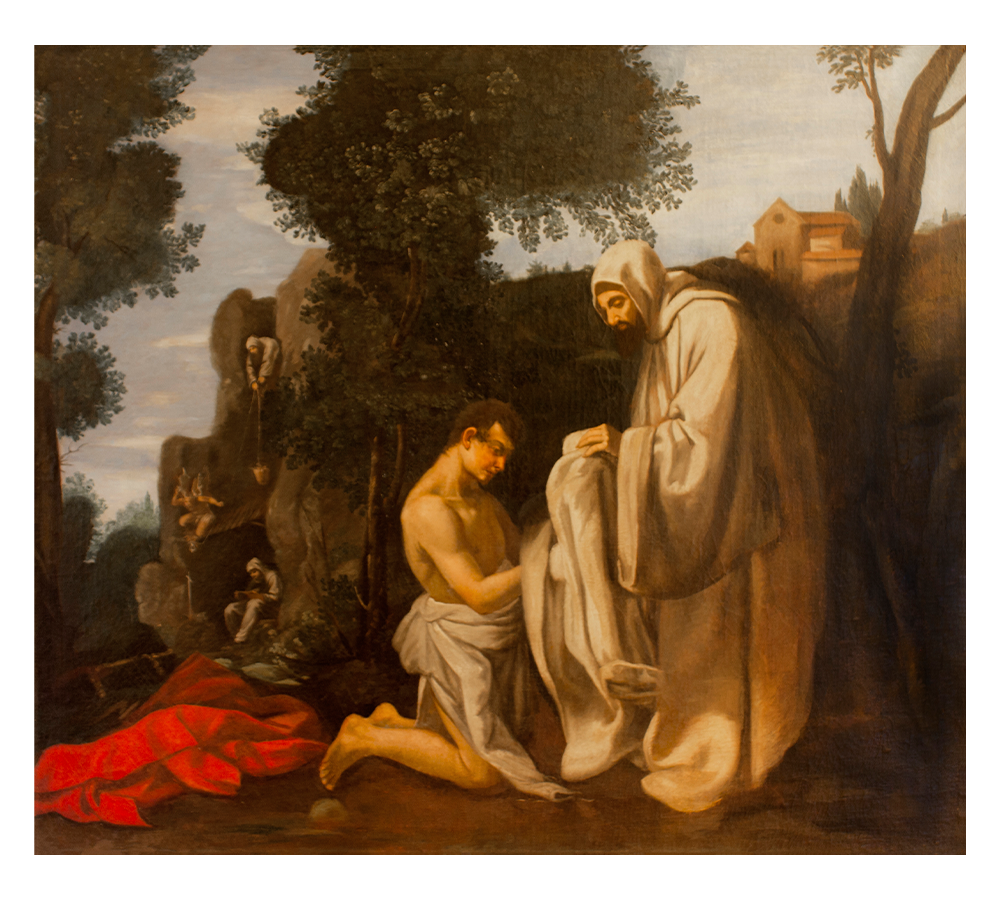
The Clothing of St. Benedict
Image size: 60″ x 68″ | Unsigned and undated, early 17th century | Oil on canvas
The Story: This large oil painting, purchased by Fr. Nicholas Frei, OSB, in San Francisco in 1881, depicts one primary and one secondary scene: 1) the Clothing of St. Benedict, receiving the monastic habit from St. Romanus, and 2), St. Romanus lowering food to St. Benedict during the three years he was a hermit living near Subiaco. The themes were derived from the Dialogues of Pope St. Gregory the Great (590 – 604). This narrative-style painting (see accordion 1) is after Jacopo Vignali (1592 – 1664). It is one of our most prized pieces of art.
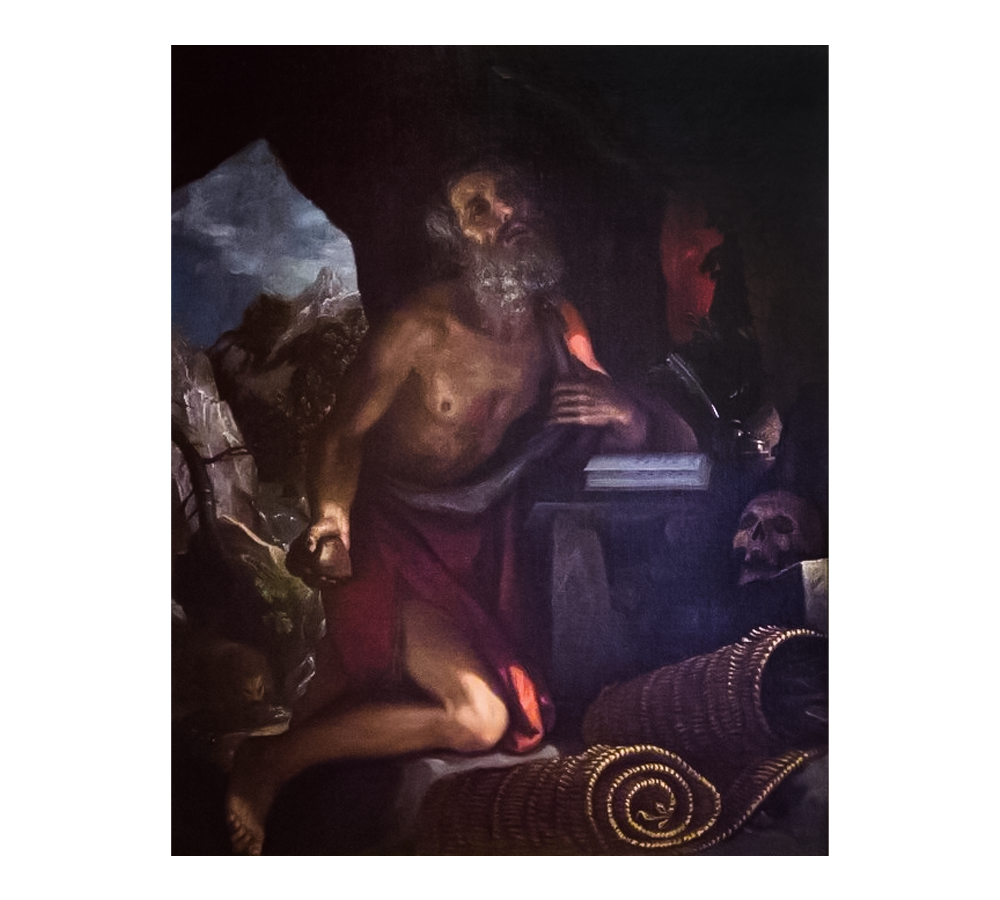
St. Jerome in Penitence
Image size: 64.25″ x 52.375″ | Signed LC, 1595 | Oil on canvas
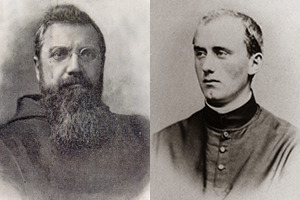
The Story: Fathers Adelhelm Odermatt, OSB (left), and Nicholas Frei, OSB (right), were our two founding monks from Engelberg Abbey, Switzerland. They left Missouri, where they had initially been sent as founders of Conception Abbey, to come to Oregon in the winter of 1881. Their intention was to establish a second monastery. Fr. Nicholas traveled to San Francisco in 1882 and, while there, bought three paintings in a second-hand shop: St. Jerome in Penitence, by Lodovico Cigoli (1559 – 1619), the Clothing of St. Benedict, and the Madonna and Child, the latter being lost in the 1892 fire at Mount Angel Abbey. The three paintings were sent back to Oregon before there was even a monastery in which to hang them or permission to establish one!
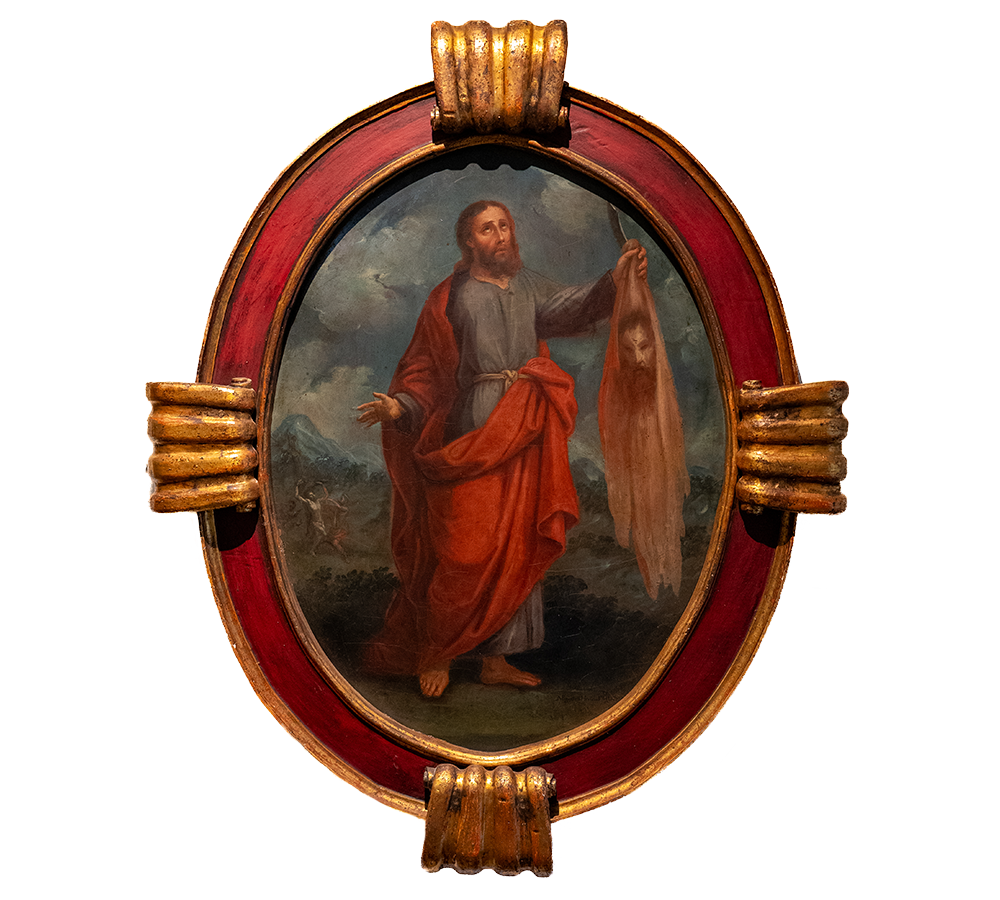
Martyrdom of St. Bartholomew
Image size: 32″ x 24″ | Signed Miguel de Herrera, 1765 | Oil on beaten copper
The Story: When “discovered” in 1990 by Br. Martin Mertl, OSB, in some mechanical storage area of the Abbey, the painting on copper was completely covered in scratches and without a frame. Br. Martin intended to recycle the copper but thought to ask Br. Claude Lane, OSB, (Abbey iconographer), about its possible artistic value. The piece was saved from destruction and restored in 1992 by Osona Galleries of Santa Fe, New Mexico, including the creation of a new 18th-century Spanish Colonial-inspired frame. This narrative-style painting by Augustinian Miguel de Herrera shows the martyrdom of St. Bartholomew in the background and the saint holding his own skin in the foreground (see accordion 3).
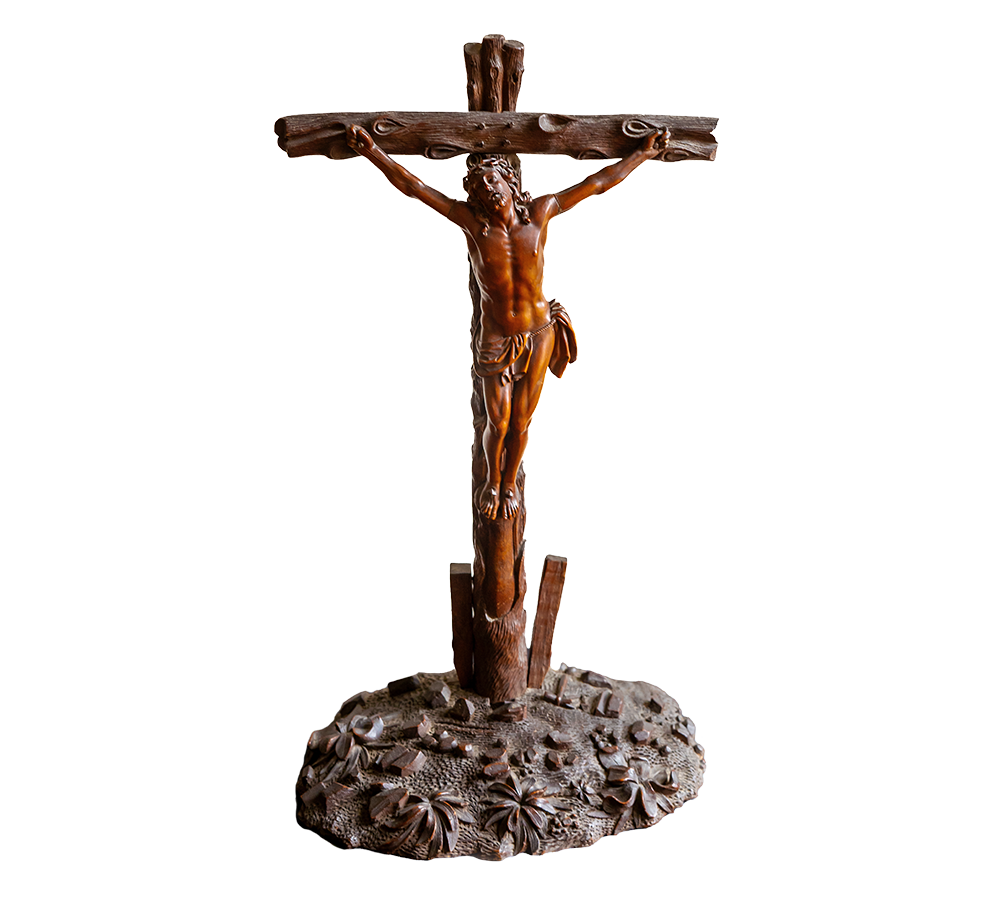
Altar Cross of Christ Crucified
Size: 28.25″ x 16″ | c. 1529 – 1829 | Wood sculpture
The Story: This altar cross was used by English recusant families (see accordion 2) in hidden home chapels during the Protestant Reformation at the time of the persecution. A substantial but dwindling minority of people from the late 16th to early 19th centuries remained Roman Catholics in England. Their church organization remained illegal until the Roman Catholic Relief Act of 1829. During this time in England, objects of Catholic devotion were often of Flemish or Belgian origin. According to documentation, descendants of one of the recusant families brought this piece to the United States in the 1800s, eventually bringing it west and giving it to Mount Angel Abbey, where it stands for courage and fidelity.
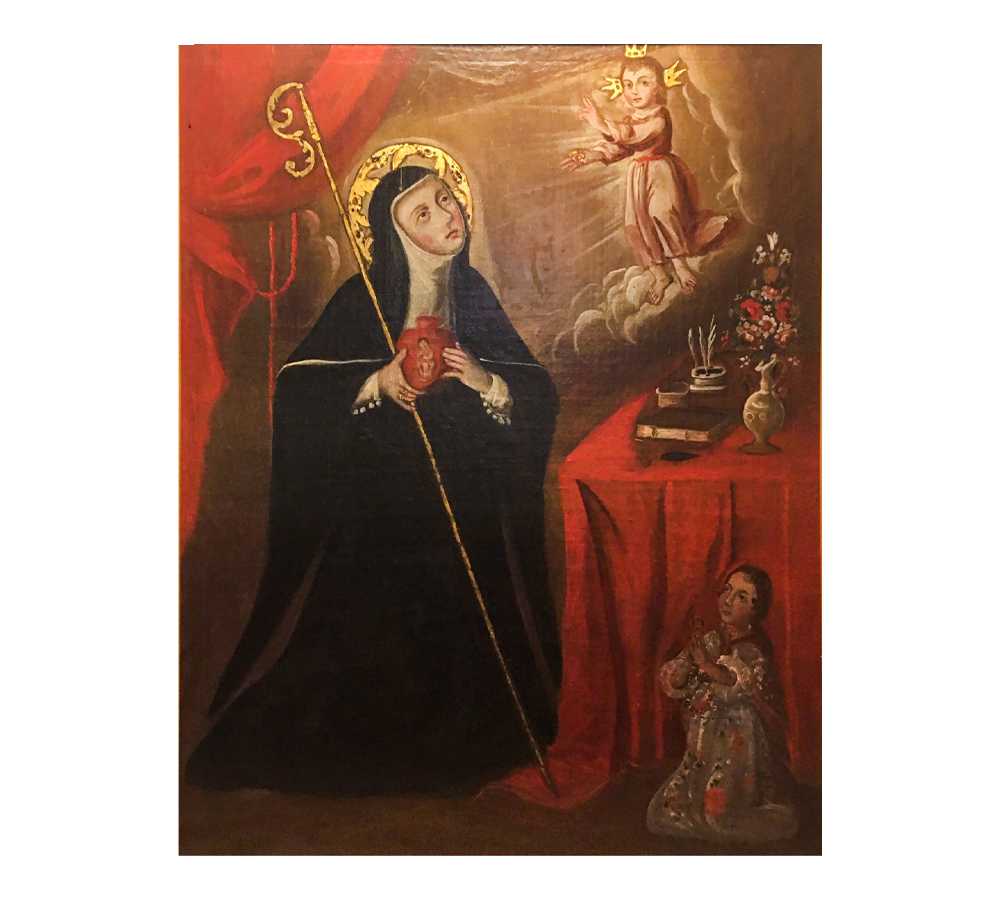
St. Gertrude the Great
Image size: 41.5″ x 33″ | Unsigned and undated, late 18th century | Oil on canvas
The Story: This painting of St. Gertrude the Great (1256 – 1302) is neither signed nor dated, but it was most likely painted in the late 1700s. This determination is based on the prominent beauty mark on the donor kneeling at the lower right-hand side. St. Gertrude is dressed as an abbess holding a crozier and a flaming heart, with Christ bestowing on her five rings representing her mystical stigmata and marriage. The painting is of Spanish colonial origins and was probably painted in or near Mexico City for private devotional use. Abbot Nathan Zodrow, OSB, was notified of its availability on the day of his election as Abbot X (July 06, 2001) through Charles Carrillo, an artist and art broker of Santa Fe, New Mexico, specializing in the Spanish Colonial period. Carrillo had been looking for such a piece at the request of then-Father Nathan, Abbey Art Curator. It is now part of the Abbey’s Spanish Colonial collection (see accordion 3). The information above about the use of the beauty mark on the donor figure is from Carrillo.
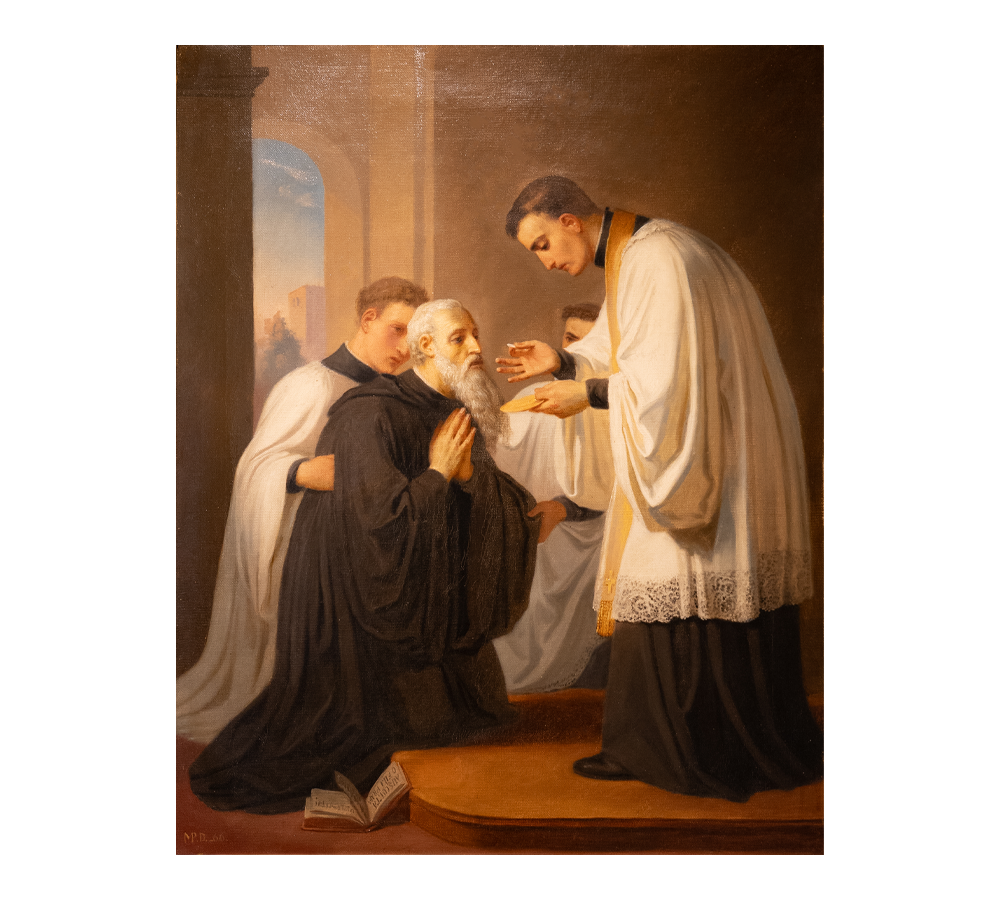
Transitus of St. Benedict (death)
Image size: 29″ x 23.5″ | Signed and dated: MP. D. 1866 | Oil on canvas
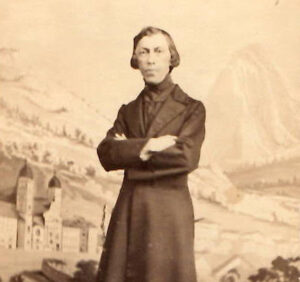
The Story: St. Benedict is kneeling in a cucula (prayer robe) with hands folded to receive communion. He is assisted by two young monks who wear the Swiss habit, indicating the artist’s association with Engelberg Abbey. At St. Benedict’s side on the floor is an open book, presumably the Holy Rule. The painting came from Switzerland, where Melchior-Paul von Deschwanden (1811 – 1881) was a well-known European artist and founder of the Stans school of painting, located near Engelberg Abbey and the hometown of Abbot Adelhelm Odermatt, OSB, cofounder of Mount Angel Abbey. One of Deschwanden’s top students painted several paintings, copying major art works in the Engelberg Abbey church during renovations. These were later sent to Mount Angel Abbey as gifts from Engelberg Abbey.
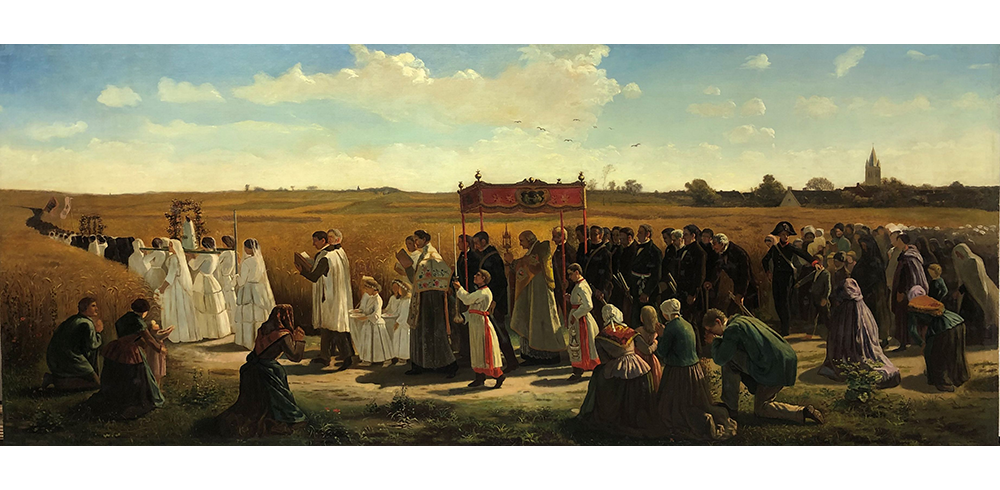
Blessing of the Wheat in Artois
Image size: 50″ x 125.25″ | Signed and dated: Theodore Gegoux, 1881 | Oil on canvas
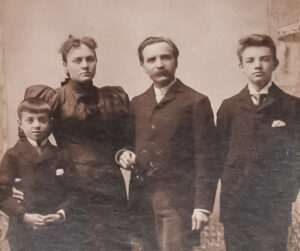 The Story: Blessing of the Wheat at Artois is a copy of the Jules Breton 1857 painting currently in the Musées des Beaux-Arts d’Arras, France. Our piece was painted by noted 19th-century American painter, Theodore Gegoux (1850 – 1931) (pictured left with his family). The scene depicts a Rogation procession that takes place three days before Ascension Thursday in the countryside around Courrières (Northern France). In January 2020, while Br. Matthew Sislow, OSB, and Fr. Nathan were visiting the Troy Lucas Conservation Labs, in Vancouver, Washington, they were shown the painting and told the owner was looking to find a good home for the painting where its spiritual theme would be appreciated. Shortly, the monumental painting was donated to the Abbey and now hangs in the main cloister hallway.
The Story: Blessing of the Wheat at Artois is a copy of the Jules Breton 1857 painting currently in the Musées des Beaux-Arts d’Arras, France. Our piece was painted by noted 19th-century American painter, Theodore Gegoux (1850 – 1931) (pictured left with his family). The scene depicts a Rogation procession that takes place three days before Ascension Thursday in the countryside around Courrières (Northern France). In January 2020, while Br. Matthew Sislow, OSB, and Fr. Nathan were visiting the Troy Lucas Conservation Labs, in Vancouver, Washington, they were shown the painting and told the owner was looking to find a good home for the painting where its spiritual theme would be appreciated. Shortly, the monumental painting was donated to the Abbey and now hangs in the main cloister hallway.
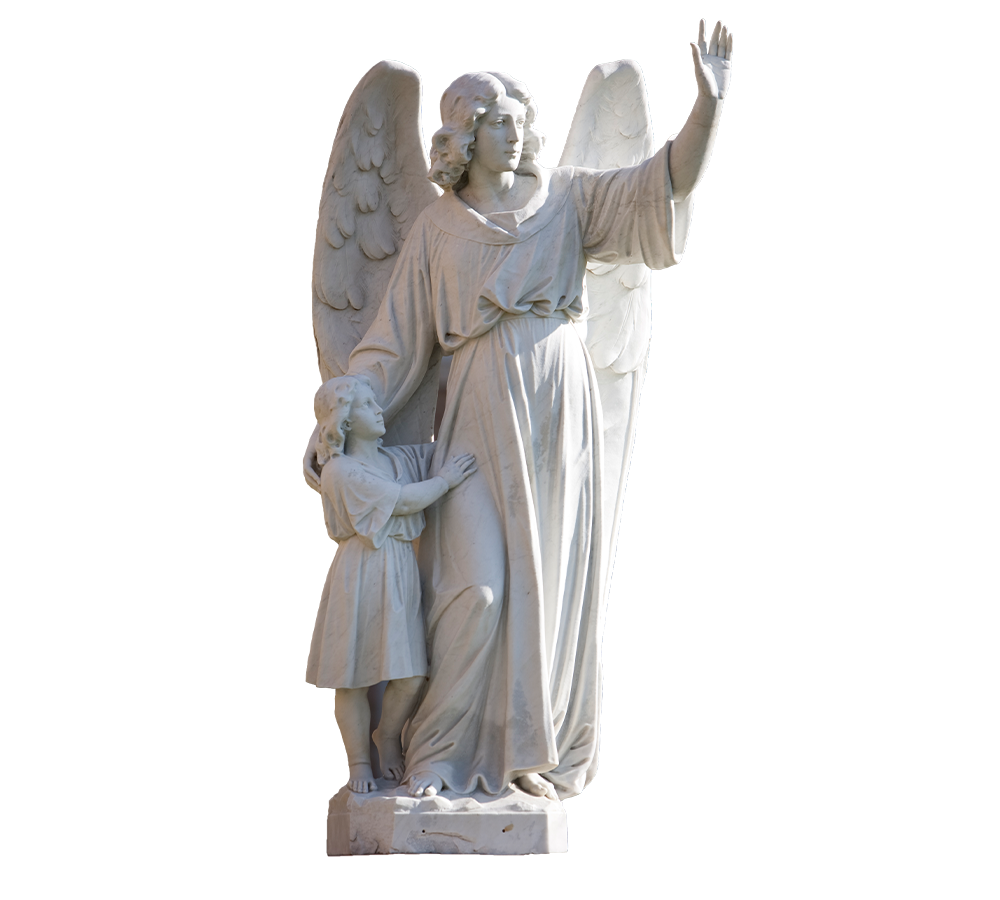
Guardian Angel with Child
Size: 72″ tall | Unknown sculptor, Italian artistry, 1914 | Carrara marble
The Story: Fr. Martin Pollard, OSB, (Mount Angel Abbey Art Curator 1945 – 1986) tells us that it is difficult to tell from archival materials which artworks were added to the new priory’s treasury in the decade after the 1893 fire. It seems natural that some acquisitions would have been made or received. A piece that stands out is the Guardian Angel statue. The Pacific Star, a newspaper published by then-Mount Angel high school in the early 20th century, notes that Fr. Adelhelm had always wanted a statue of the Angel. It seems, in 1914, a benefactor gave this statue to the Abbey. The Pacific Star of that same year says, “An angel measuring six feet, carved from white [Carrara] marble by an Italian sculptor, has been mounted over the fountain in the center of the garden in front of the (1903) monastery.” (December 1914). This piece survived the disastrous fire of 1926 and stands today on the south lawn of the Abbey church.
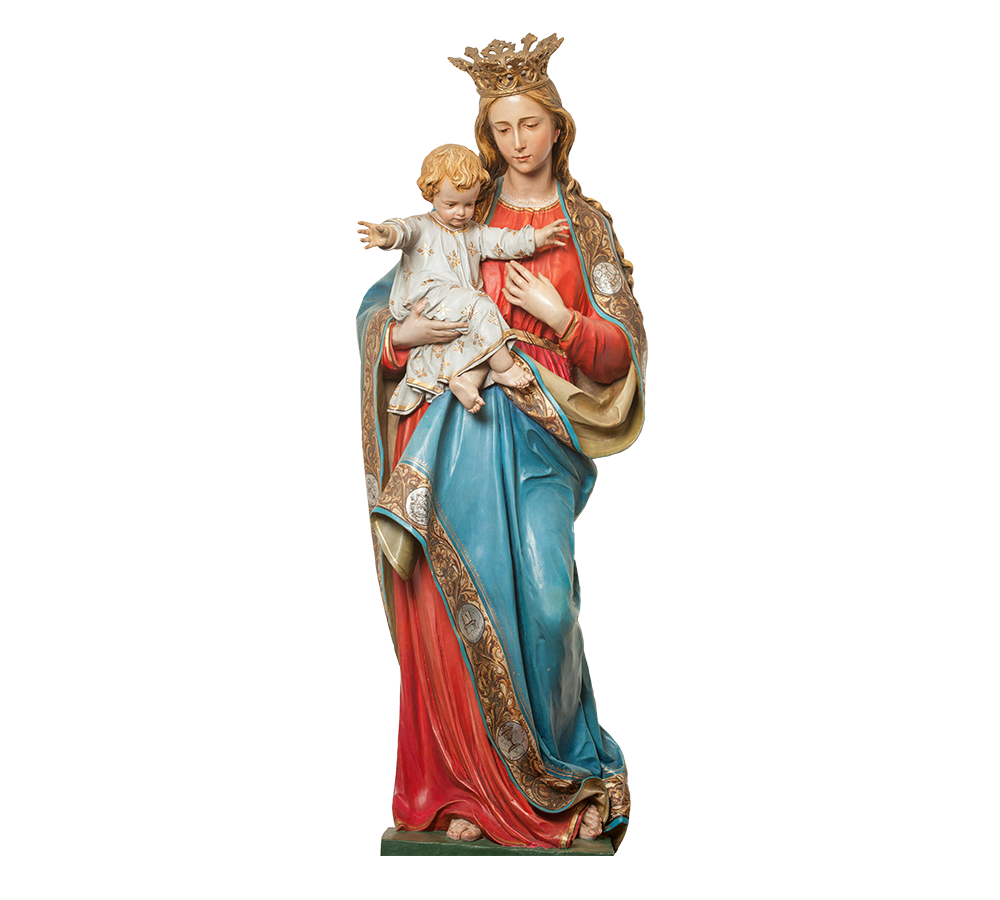
Madonna and Child
Size: 60″ tall | Unknown sculptor and date, possibly late 19th century | Carved in oak
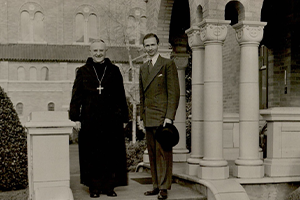 The Story: This wood polychromed statue of Mary holds the child Jesus, who stretches out his arms to embrace the world. Mary is wearing an outer cloak of gold decorative fabric with blue banding. On the band are emblems signifying titles of Mary taken from the Litany of Loreto. (Description by Dr. Elizabeth Farley, PhD, Professor of Mariology (ret.), Mount Angel Seminary.) The Tyrolean statue was given to the Abbey by Otto Von Hapsburg (1912 – 2011), son of the last Austro-Hungarian emperor, as a gift after a visit to Mount Angel Abbey in October of 1949. The statue is affectionately referred to by some as Mary of the Cloister. The monks gather in front of this statue each night after compline to sing the appropriate seasonal Marian antiphon before bed, after which the Abbot blesses the monks with holy water.
The Story: This wood polychromed statue of Mary holds the child Jesus, who stretches out his arms to embrace the world. Mary is wearing an outer cloak of gold decorative fabric with blue banding. On the band are emblems signifying titles of Mary taken from the Litany of Loreto. (Description by Dr. Elizabeth Farley, PhD, Professor of Mariology (ret.), Mount Angel Seminary.) The Tyrolean statue was given to the Abbey by Otto Von Hapsburg (1912 – 2011), son of the last Austro-Hungarian emperor, as a gift after a visit to Mount Angel Abbey in October of 1949. The statue is affectionately referred to by some as Mary of the Cloister. The monks gather in front of this statue each night after compline to sing the appropriate seasonal Marian antiphon before bed, after which the Abbot blesses the monks with holy water.
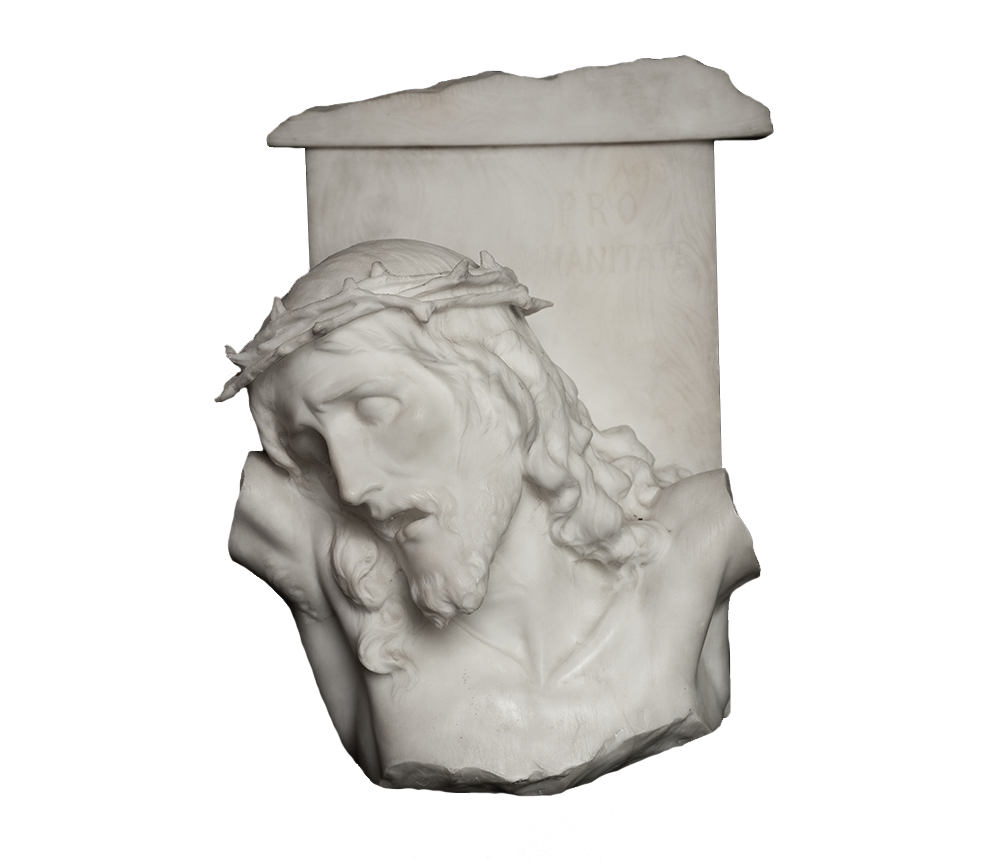
Christ Crucified
Size: 20″ x 14″ | Unknown sculptor | Marble carving
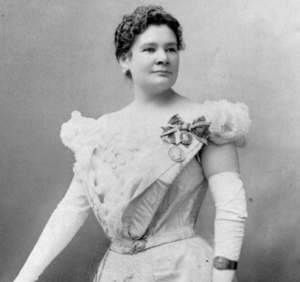 The Story: At his golden jubilee of ordination in 1916, Fr. Adelhelm Odermatt, OSB, cofounder of Mount Angel Abbey, was honored with the designation of titular abbot. To honor this occasion, Fr. Adelhelm’s friend, the famous international opera star Madame Ernestine Schumann-Heink (1861 – 1936), traveled to Oregon for the celebration. While here, she presented, Abbot Adelhelm with a marble sculpture of the head of Christ on the cross. How Fr. Adelhelm and Madame Schumann-Heink met or how their friendship developed is unknown. They were not from the same country, nor is it likely they traveled in the same social circles, so the question remains.
The Story: At his golden jubilee of ordination in 1916, Fr. Adelhelm Odermatt, OSB, cofounder of Mount Angel Abbey, was honored with the designation of titular abbot. To honor this occasion, Fr. Adelhelm’s friend, the famous international opera star Madame Ernestine Schumann-Heink (1861 – 1936), traveled to Oregon for the celebration. While here, she presented, Abbot Adelhelm with a marble sculpture of the head of Christ on the cross. How Fr. Adelhelm and Madame Schumann-Heink met or how their friendship developed is unknown. They were not from the same country, nor is it likely they traveled in the same social circles, so the question remains.
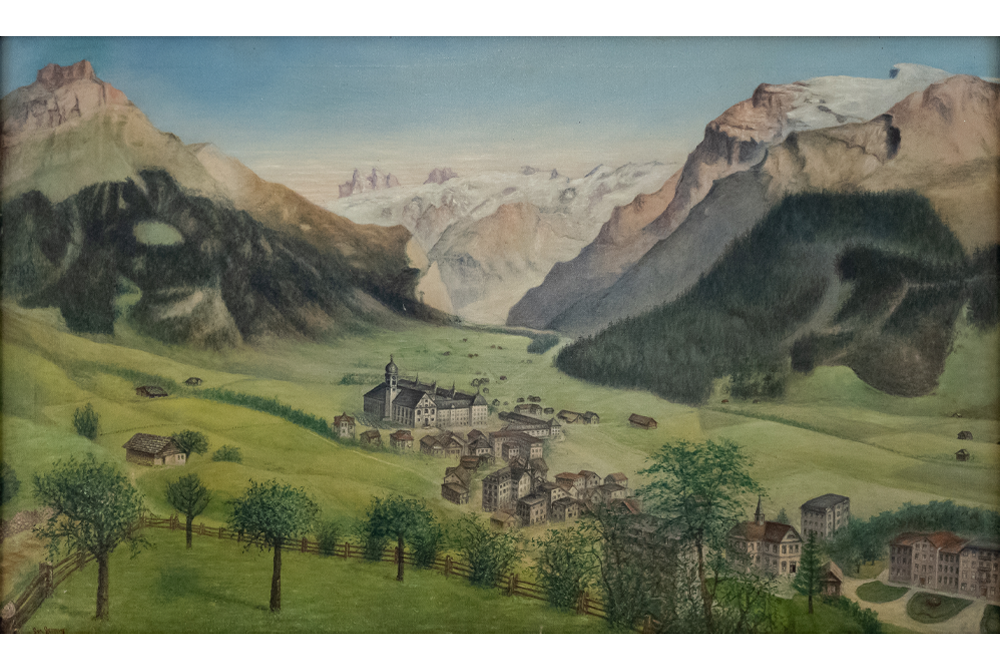
Engelberg Abbey, Canton Obwalden, Switzerland
Image size: 30.5″ x 50″ | Signed and dated: J. Jenny, 1921 | Oil on canvas
The Story: According to Fr. Martin Pollard, OSB (Art Curator 1945 – 1986), this painting, along with portraits of Abbot Adelhelm Odermatt, OSB, and Abbot Anselm Villiger, OSB, of Engelberg, were painted by Joseph Jenny (pronounced Yenny). It is unknown whether or not Jenny painted them from life, but in the case of Adelhelm, it couldn’t have been since the painting is marked 1921, the year after he died). The Jennys, originally from Switzerland, had moved to the town of Mt. Angel, according to Fr. Anthony Terhaar, OSB, where they owned a drug store in town. The Jennys were the artists who painted the interior of St. Mary Catholic Church in Mt. Angel in the Swiss Neo-Gothic style when it opened in 1912.
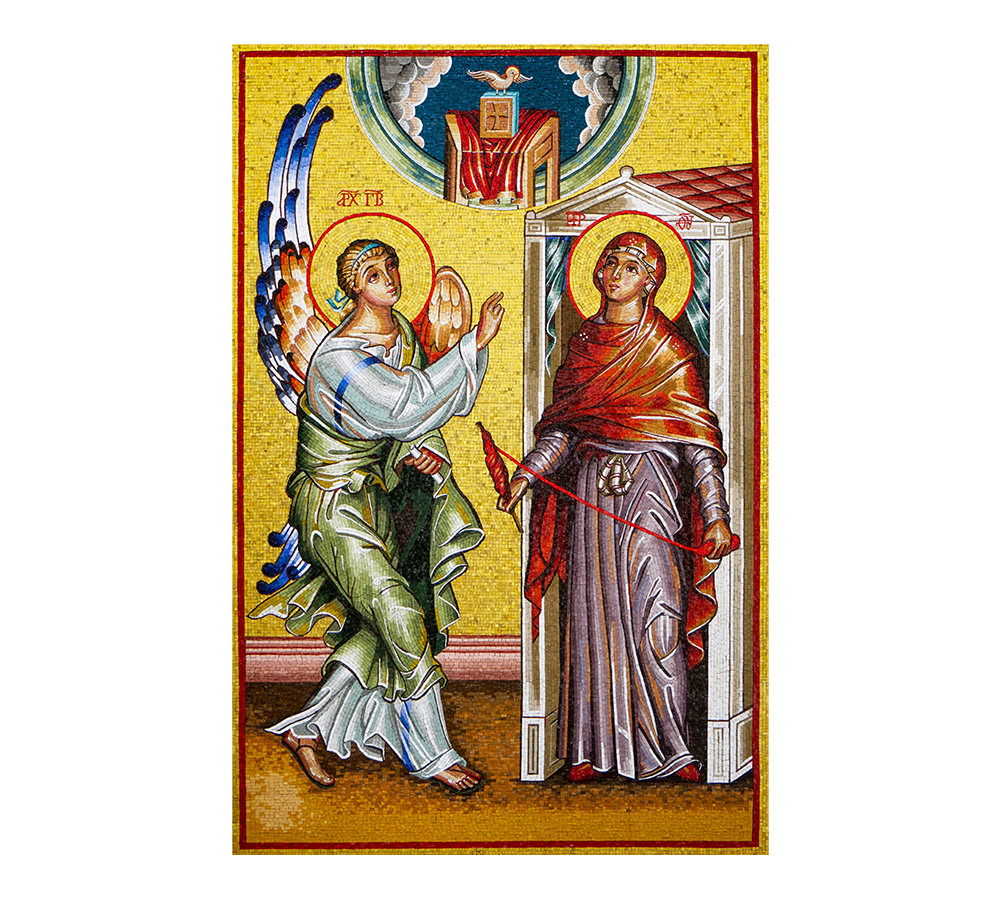
Annunciation of the Lord to Mary
Image size: 108″ x 72″ | By iconographer Br. Claude Lane, OSB, and mosaicist Lynne Chinn, 2005 | Stone and glass tile, Italian gold smalti
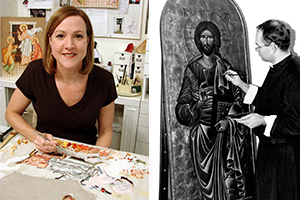 The Story: This beautiful mosaic depicts the mystery of the Annunciation of the Archangel Gabriel to Mary, asking her to become the Mother of God. Above Mary and the angel, a dove (Holy Spirit) rests on the Word of God (book) which, in turn, rests on the blood red cloth covering the seat of heaven. This image was chosen by the planning committee after the name of our new theological building was determined to be Annunciation (2005). Br. Claude Lane, OSB, painted the original icon which was then translated by Lynne Chinn into the mosaic we have today in the foyer of the building. Seminarians grapple with the Lord’s call, in imitation of Mary, Mother of God, who answered with her full-hearted, “Let it be done to me according to your will.” This piece is an inspiration to us all.
The Story: This beautiful mosaic depicts the mystery of the Annunciation of the Archangel Gabriel to Mary, asking her to become the Mother of God. Above Mary and the angel, a dove (Holy Spirit) rests on the Word of God (book) which, in turn, rests on the blood red cloth covering the seat of heaven. This image was chosen by the planning committee after the name of our new theological building was determined to be Annunciation (2005). Br. Claude Lane, OSB, painted the original icon which was then translated by Lynne Chinn into the mosaic we have today in the foyer of the building. Seminarians grapple with the Lord’s call, in imitation of Mary, Mother of God, who answered with her full-hearted, “Let it be done to me according to your will.” This piece is an inspiration to us all.
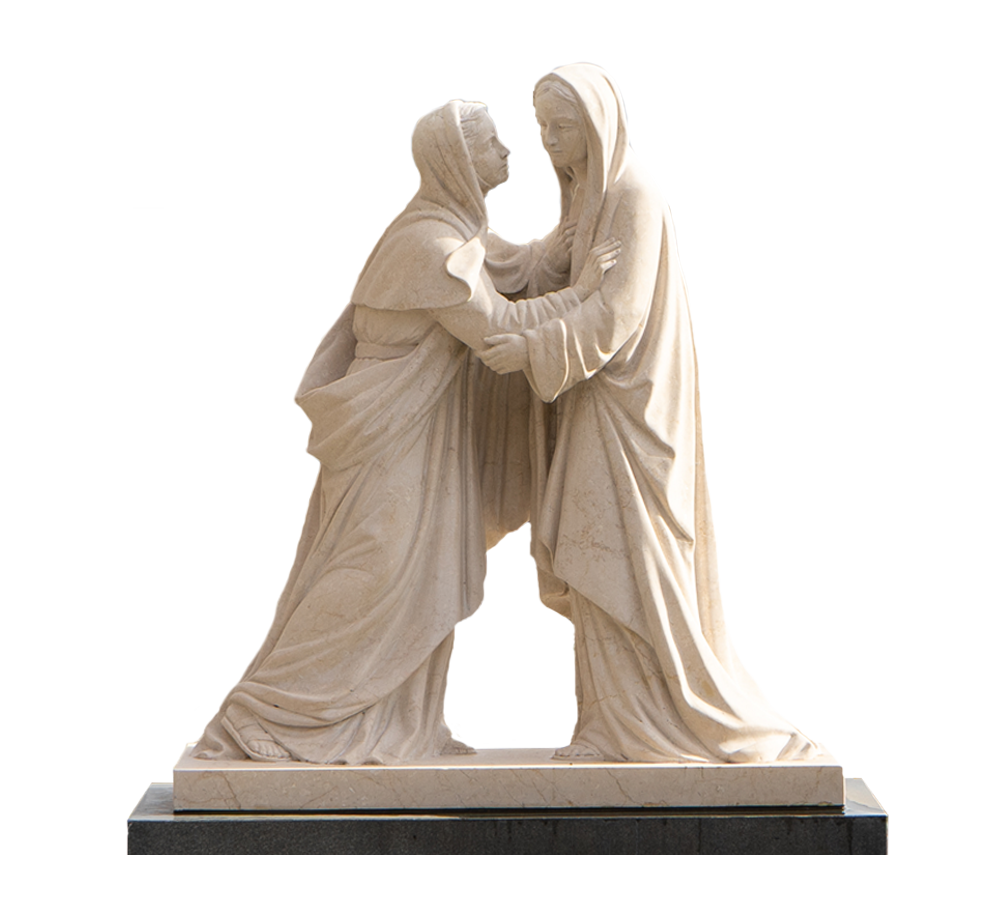
Visitation of Mary to Elizabeth
Size: 48″ tall | Livio Lo Bianco, 2020 | Botticino marble
The Story: This beautiful marble sculpture was created by Italian sculptor Livio Lo Bianco, a sculptor in the studio of Emanuele Barsan, Lucca, Italy. It depicts a young, pregnant Mary visiting her elderly cousin who is with child, John the Baptist. The two approach each other with great gentleness and love, reaching out and showing much respect. The meeting appears quite emotional in an entirely subtle way. The Statue sits on a substantial base of granite. This sculpture is the artistic anchor of the 2019 renovated plaza of the Abbey’s Saint Benedict Guesthouse and Retreat Center. It was given in memory of Elizabeth, the wife of former Abbey Foundation of Oregon board president, Stephen Zimmer. The mystery of the Visitation traditionally represents love of neighbor, a virtue which inspires Benedictine hospitality.
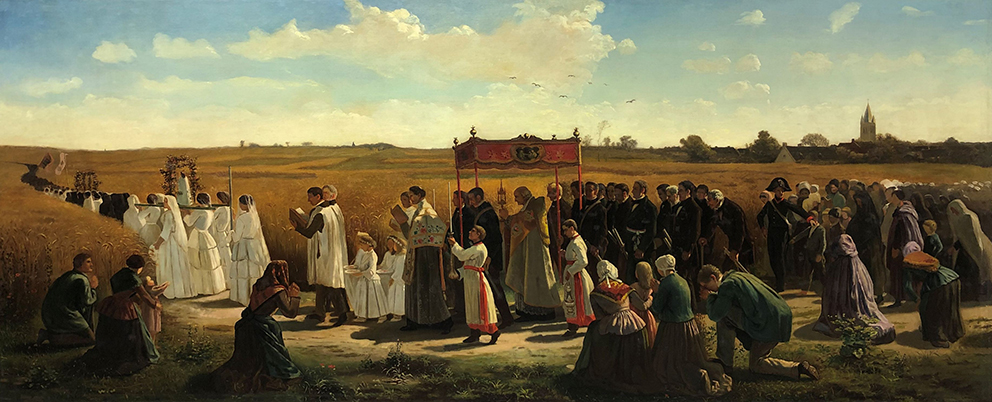

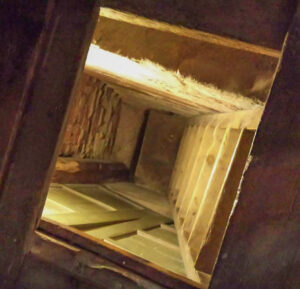 Recusancy (from Latin: recusare, literally “to refuse”) was the state of those who remained loyal to the Catholic Church and refused to attend Church of England services after the English Reformation (1529 – 1536). While illegal to be a recusant, some Catholic families built “priest holes” (pictured left) so that a priest could be concealed when searches were conducted. They were concealed in walls, under floors, behind wainscoting and other locations. In addition to the priest, these spaces concealed vestments, sacred vessels, and other items needed for the celebration of Mass. Catholicism remained illegal in England until 1829.
Recusancy (from Latin: recusare, literally “to refuse”) was the state of those who remained loyal to the Catholic Church and refused to attend Church of England services after the English Reformation (1529 – 1536). While illegal to be a recusant, some Catholic families built “priest holes” (pictured left) so that a priest could be concealed when searches were conducted. They were concealed in walls, under floors, behind wainscoting and other locations. In addition to the priest, these spaces concealed vestments, sacred vessels, and other items needed for the celebration of Mass. Catholicism remained illegal in England until 1829.








 The Story:
The Story:

 The Story:
The Story:
 The Story:
The Story: 

 The Story:
The Story: